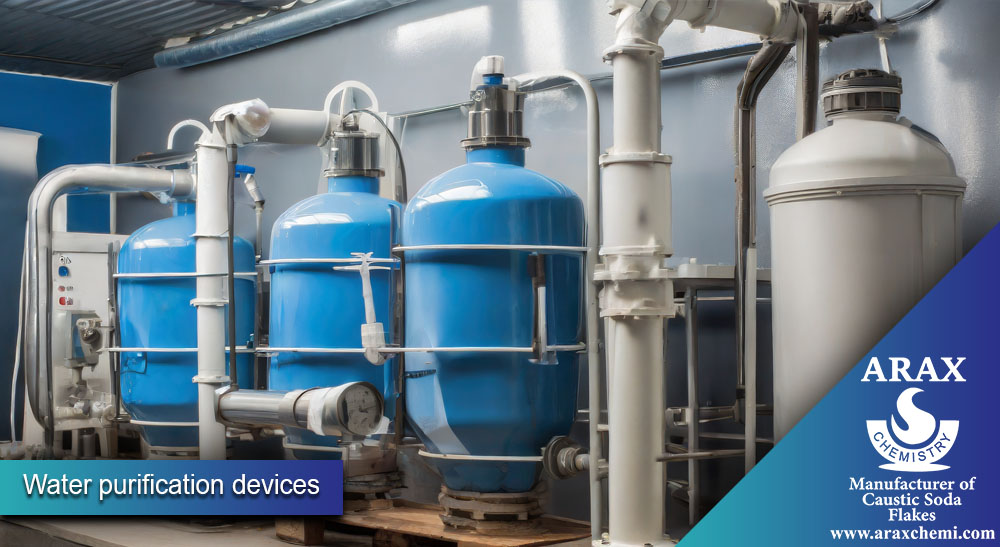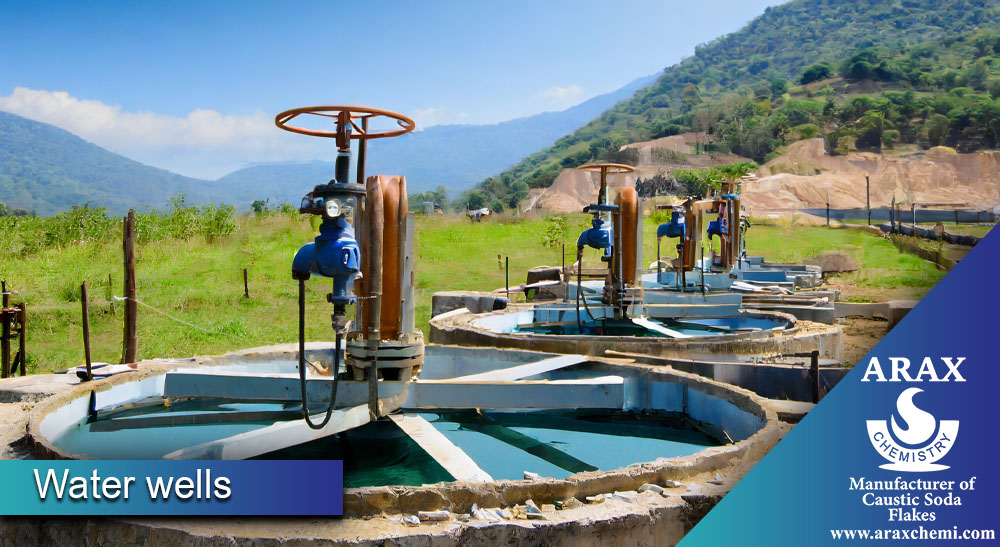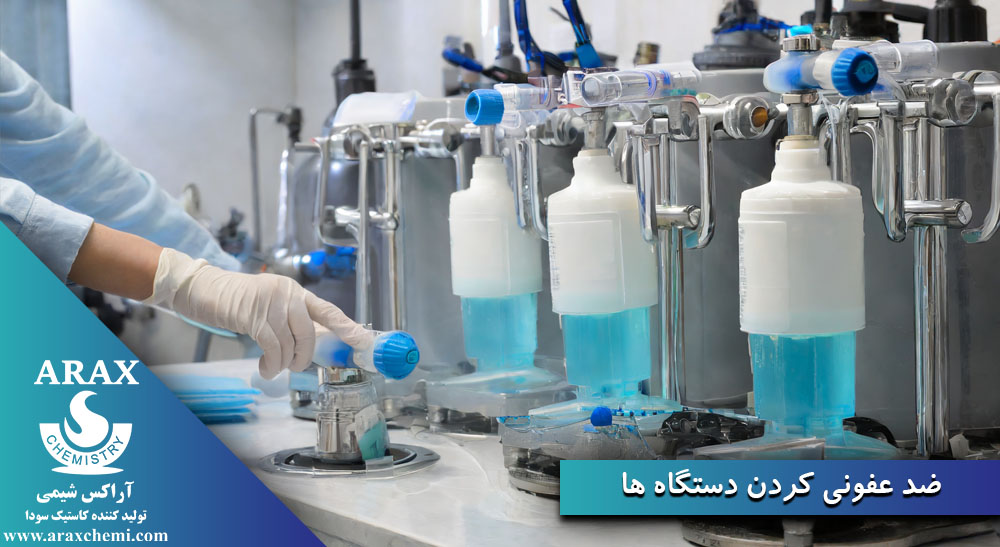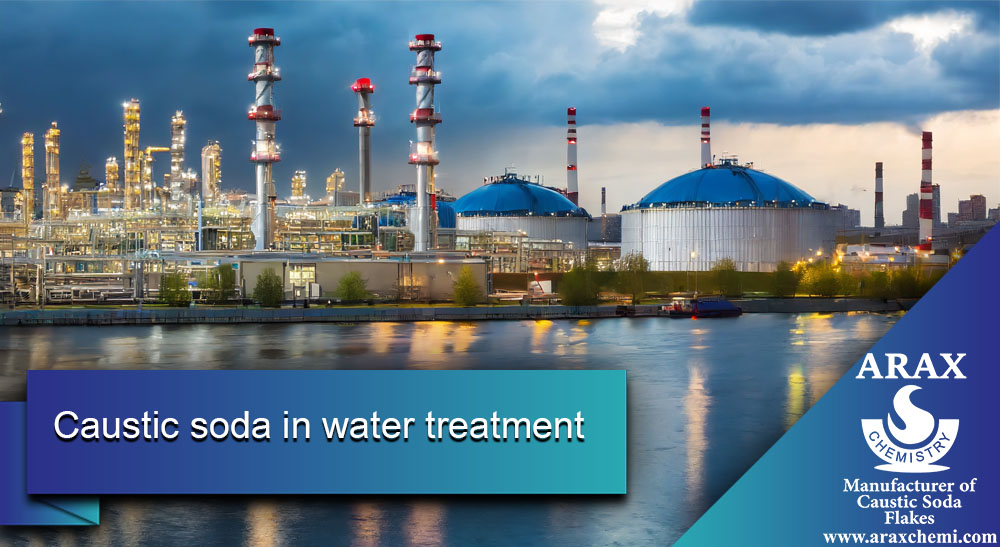Water treatment is one of the most pressing environmental and public health challenges in the world. With the expansion of population, industry, and multiple uses of water resources, maintaining the quality and providing drinking water resources in sufficient quantity has become one of the basic goals of societies. In this regard, water purification technologies have been proposed as an outstanding means to preserve the health of the environment and improve human health. One of the important principles in water purification is the regulation of water pH. pH refers to the degree of acidity or alkalinity of a solution, and this parameter has a direct effect on the influence of chemical and biological processes in the water purification process. One of the key ingredients in adjusting the pH of water is caustic soda or sodium hydroxide (NaOH). In this article, we will examine the applications of caustic soda in water purification, its effects on water quality, and the role of this chemical compound in improving water purification processes.
The initial stages of water purification
In the initial stages of water purification, a set of chemicals are used to improve water quality and remove various pollutants. These materials are carefully selected and used in different water purification processes so that the water can be cleaned as much as possible from various impurities and pollutants. Some of these chemicals are as follows:
Chlorine
Chlorine is used as a strong oxidizer in water purification. This substance removes organic oxides and microbes and is used in the primary process of water purification to disinfect and destroy organics.
Let’s go
Iodine and bromine are used as antimicrobial substances in water purification and lead to high effectiveness in reducing bacteria and microbes in water.
silver
Silver is used as an antimicrobial agent in water purification. This substance is usually used to control the growth of microbes and prevent bacterial contamination.
Non-toxic organic acids
Organic acids are commonly used in water treatment processes to adjust pH. By increasing or decreasing the pH, these acids help to maintain the appropriate environmental balance for biological processes.
lime
Lime is used as an opening agent with acids in water and also to remove suspended pollutants.
Mild alkalis such as caustic soda
Mild alkalis such as caustic soda are used to adjust pH and prevent high acidity in water. These substances help maintain pH balance and improve biological processes.
Neutralizing chemicals such as caustic soda
Neutralizing substances such as caustic soda or caustic soda are used to adjust pH and also to remove acids in water treatment processes.
ion exchange
The ion exchange process is used to remove harmful ions such as iron, manganese, nickel and other heavy metals from water.

Use of caustic soda in water purification
Water purification is one of the basic steps in the process of making quality and safe water for public consumption. One of the basic factors in this process is adjusting the pH level of water in order to preserve the environment and improve management processes. In this regard, liquid soda is used as an alkaline substance with neutralizing properties to adjust water pH and improve water quality. pH indicates the acidic or alkaline state of water. PH management is from 0 to 14 changes. 7 shows the neutral point. The normal pH range of drinking water is 6 to 8.5. The pH is mostly a result of the natural geological conditions at the site and the type of minerals present in the local rocks. pH can also be affected by acid rain. Water with a pH value of less than 7 is acidic and corrosive.
Use of liquid caustic soda in water purification
If the water is acidic, adding liquid soda to the water purification process is one of the effective ways to adjust the pH of the solution. By adding caustic soda to water, the pH is raised to near neutral. This action is effective in reducing water acidity and increasing its alkalinity.
Use in water wells

To increase the pH of water in water wells, liquid caustic soda is injected into the well. Due to the corrosiveness of caustic soda, a feeding pump that is resistant to chemical corrosion is used. This pump adds an appropriate amount of liquid caustic soda to the beginning of the water flow and adjusts the pH. This method not only helps to improve the water quality in the well, but also prevents the corrosion of well head equipment and water suction pump.
Disinfection in different stages of purification

If disinfection is needed in different stages of water purification, sodium hypochlorite or brine water is used as an antimicrobial agent. In addition to increasing the pH, this substance also acts as a disinfectant and prevents the growth of microbes.
Advantages and disadvantages of using caustic soda in water purification
Advantages
pH adjustment

Caustic soda helps purify water and increase its efficiency.
Descaling
Caustic soda is used to solve descaling problems. This material can dissolve sediments and prevent sediment formation in equipment.
Removal of heavy metals
By increasing the pH with caustic soda, the removal of heavy metals such as lead, zinc and cadmium from water is facilitated and helps to reduce harmful pollutants in water.
disinfection
Caustic soda acts as an effective disinfectant in water purification and helps control the growth of microbes and bacteria.
Disadvantages
Safety hazards
Caustic soda is a very strong alkali and can be dangerous if misused or in direct contact with the skin. Caution and use of safety tools are essential.
Energy consumption
The production of caustic soda requires a lot of energy. This may increase the cost of water treatment on a large production scale.
Effect on other substances
Some materials and equipment may corrode and deteriorate quickly under the influence of caustic soda. The need for careful management and control of the use of this material is important.
Increase in TDS (dissolved substances)
Excessive use of caustic soda may lead to an increase in total dissolved solids (TDS), which may be undesirable in some cases.
Effect on the taste and smell of water
Excessive consumption of caustic soda may produce taste and odor effects in water and thus affect consumers.
Conclusion
In general, the use of caustic soda in the water purification process as an effective and key alkaline substance is very important. This substance not only helps to accurately regulate the pH of water, but also plays an effective role in preventing the growth of microbes, removing heavy metals, and reducing organic pollutants. However, as with any decision, using caustic soda comes with responsibility and careful monitoring. Safety issues and side effects should be carefully considered. It is essential that the parameters of the use of this substance remain at a minimum to preserve the environment and public health.
The correct use of caustic soda, along with the improvement of water treatment processes and compliance with standards, can help improve water quality and provide quality water sources for different communities. Considering the mentioned advantages and disadvantages, the development of new researches and technologies in the field of using perk soda can play an effective role in improving and optimizing water purification processes.
ARAX CHEMISTRY industrial group is a great manufacturer of Caustic Soda Flakes that can offer its High-quality products.
